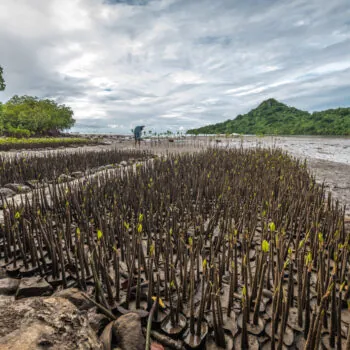Keeping global average temperature below 2°C depends on shifting trillions of dollars of investment annually and on a global financial ecosystem that is fit for purpose. An effective Green Climate Fund (GCF) should be the fulcrum of such a system, catalysing national and international flows of public and private finance away from high carbon, vulnerable investments and towards those required for a low carbon and resilient development paradigm.
Seventh Meeting of the GCF Board
Progress towards a process for capitalising the GCF is largely seen as critical to keeping the prospects of a UN climate deal in Paris 2015 on track. The Board, which comprises 24 governments with equal representation from developed and developing countries, and is meeting in Songdo, South Korea next week, needs to converge around six essential issues in order to trigger the resource mobilisation process.
When the Board last met in February, many were disappointed that only two of the agreed eight essential issues were delivered. Since then, discussions have progressed along several tracks. The South Korean government convened an informal dialogue to share views on the key outstanding governance issues. Sub-committees of the GCF’s Risk Management and Investment Frameworks, Ethics and Audit departments, as well as an Accreditation team, have been working intently on their respective mandates. Finally, the Private Sector Advisory Group (PSAG) has provided high-level recommendations for the Board’s consideration regarding how the Fund, including its private sector facility, can mobilise and deliver scaled-up private sector investment.
The functions of climate finance
What is really at stake falls into two main categories. On the one hand, there is the political imperative for capitalising the Fund this year and tangibly demonstrating that developed countries remain committed to their Copenhagen commitment to mobilise $100bn annually by 2020. On the other, it is necessary to ensure that the Fund is designed to impact on the real economy. Staying within the 2°C objective is estimated to require global investment in green infrastructure and the agriculture and forestry sectors of at least $5trillion annually by 2020. Compare this to the current annual flows of $360 billion towards these activities and it quickly becomes apparent that international climate finance must be used strategically for greatest catalytic impact.
In this respect international climate finance has a very different role to play to that of direct aid for poverty reduction. Given the scale of the challenge, climate finance alone will never form the bulk of investment in low carbon or resilient infrastructure. But it can help to redirect and leverage investment from domestic public and private sector investors, and to make countries more attractive to global flows of private capital. This means that the GCF will need to support national financing strategies to shape the most dynamic and fastest moving parts of national economies, and shift incentives for companies, asset holders and individual investors.
Designing a fund that is fit for purpose
The talks have so far made clear that the Fund will provide grants and concessional finance in support of climate actions within developing countries. However, what is less clear is whether the GCF risk management and investment frameworks and other key elements of its design can provide the normative framework within which all sources of international climate finance could be governed.
It is this latter function that would set the GCF apart from existing climate funds. The current international climate finance landscape can be characterised as diverse and highly fragmented. The myriad of differing access modalities, rules and criteria for investment in climate finance, as well as the variety of monitoring and reporting requirements, create significant burdens on public sector agencies seeking to use such resources. Such fragmentation also undermines the growth of new domestic green markets.
Working through intermediaries – at least in the initial stages – the Fund has the potential to catalyse transformational changes across the range of public and private sector financial institutions with which it interacts. As multilateral, bilateral and national development banks co-invest alongside the GCF, it can help to shape their approaches towards climate finance and investments. In this and in several other respects, there is the opportunity for the GCF to be central to a new global financial ecosystem that is fit for purpose within the paradigm of sustainable development.
Codifying financial innovation emerging outside of the GCF
Finally, looking outside of the GCF process a number of initiatives are focusing efforts on the innovation and learning required for an effective ecosystem for climate finance. These include the Financing for Resilience Initiative led by Bloomberg New Energy Finance, a new UK, German and United States-led Climate Finance Innovation Lab, the IFC led Sustainable Banking Network and a UNEP Inquiry on Sustainable Finance.
The GCF can and should build on such learning to scale-up or replicate successful financial innovation. In doing so, it can codify and lock-in good climate finance practice so that this becomes the new norm. As investors become more familiar with these norms, the perceived risks are lowered, in turn leading to lower costs of capital. This underscores the need for ensuring the GCF is viewed credibly by actors from the public and private financial sectors alike.
In recognition of the evolutionary nature of the GCF, the Board will next week be asked to decide on issues that will constitute the initial business model of the Fund.
Key indicators of success to look out for next week:
- Risk management and investment frameworks: Any agreements regarding initial risk management and investment frameworks must emphasise the importance of delivering a paradigm shift. One critical indicator of a successful Fund will be its capacity to mobilise scaled-up flows of private finance. The ability of the GCF to share and, where necessary, absorb risks, will be critical to delivering on this objective. Next week the Board will need to consider this in light of the risk-management framework, including how this is shaped by financial contributions to the Fund. In particular, issues such as the ratio of grant to loan contributions, and whether those wanting to provide loans can now agree to measures that would increase the risk appetite of their contributions, must not become sticking points next week. Detailed investment criteria will also be required to guide countries and the private sector on specific projects and programmes that can be brought forward for funding by the GCF.
- Guiding framework for accreditation: Procedures for the accreditation of national implementing entities and intermediaries should allow countries to build upon existing country arrangements, capacity and priorities. A proposed “tiered accreditation” process should provide the necessary flexibility for countries to move quickly to access resources via accredited international entities; at the same time, national entities can go through the accreditation process which will allow countries to directly access the Fund. A proposed work programme for building complementarity and coherence between the GCF and other relevant funds accreditation processes will also be important for promoting coherency within the international ecosystem for climate finance.
- Project and programming approval process: It is essential that the approval process incentivises countries – and where feasible the private sector – to come forward with programmes designed to deliver the greatest transformational impact. Understanding how to motivate and build support among relevant stakeholders will be essential to achieving such impacts. Whilst some countries may be ready to come forward with these fairly quickly, others may require additional support to increase their capacity to do so. When the Board met in February, lengthy debates ensued over the no-objection process. Hopefully lessons of what works well within existing Funds have been assimilated, allowing discussions to now move beyond this issue.
- Results-management framework: A results-management framework should be seen as a key tool in identifying and stimulating transformational investments and change, as well as setting global standards for transparency and verification of actions. A more detailed performance measurement framework (PMF) will be necessary in developing funding proposals for projects and programmes, as well as the potential for results-based allocation in the future.
Next week in Songdo the Board will need to converge on the above issues as a minimum to establish clarity regarding the initial operating modalities of the Fund. If the Board cannot agree on the details of the Fund’s investment criteria and performance measurement system, they should decide to address these when they next meet in October. Assuming the six essential issues are resolved, the Board will also need to decide on the process for resource mobilisation. It is proposed that interested contributors should collectively engage on the initial resource mobilisation process, with the first meeting taking place before the end of June 2014. This would be a marked success for the Board, allowing for the GCF to be capitalised as soon as September, and signal that the first investments could be made in early 2015.
Implications of failure?
If the Board dithers next week and is unable to reach agreement on the six essential items and the resource mobilisation process, the opportunity for the GCF to become the centrepiece of a new financial ecosystem could be lost. A GCF that was not ready to be capitalised this year would likely leave some countries with little option but to channel their climate finance through alternative means. A key question would then be whether the various new and existing multilateral and bilateral climate finance initiatives could fill the vacuum of a GCF that had yet to become operational. Another and potentially more urgent question would be what that would mean for the climate negotiating process leading up to Paris in 2015….
Catalysing the financial ecosystem for #climate #finance: prospects for the Green Climate Fund @AmaleeAmin #GCF https://t.co/a5e19VI5NT
— E3G (@EthreeG) May 15, 2014


